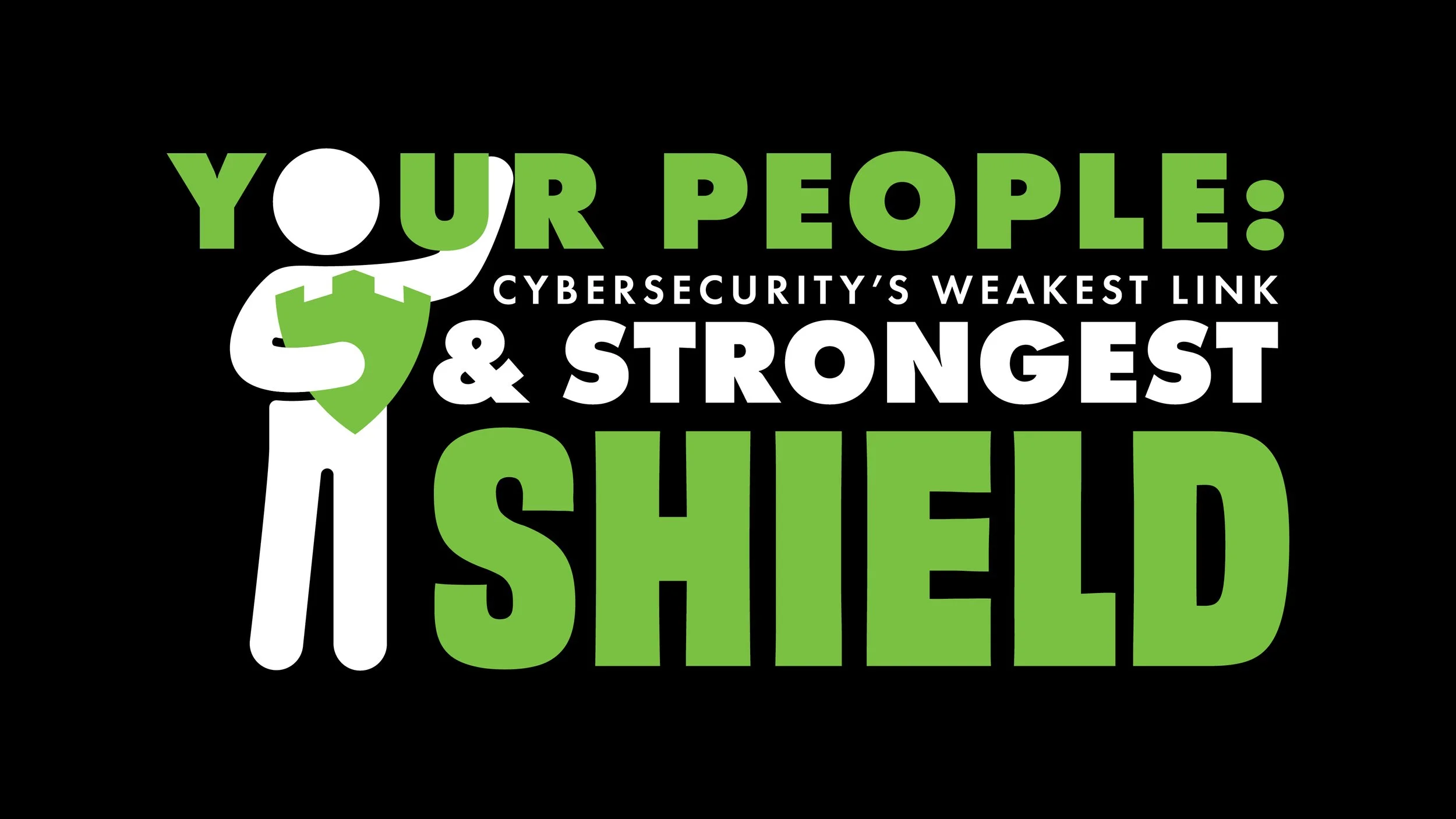Your People: Cybersecurity’s Weakest Link… and Strongest Shield
When you think of cybersecurity, what comes to mind? Probably something like firewalls, antivirus software, and those green scrolling letters from The Matrix. What most folks don’t picture is Carl from sales checking his email on airport Wi-Fi or Taylor in finance rushing to pay an invoice that looked a little off.
The truth is, the biggest vulnerability in your cybersecurity plan is not your tech. It’s your people.
Now, before we start pointing fingers, let’s be clear. This isn’t about blame. It’s about awareness. Because the very same people who might accidentally open the door to an attack are also the ones who can keep it locked tight.
The Human Factor
According to recent studies, over 70 percent of security breaches come down to human error. Not advanced malware. Not elite hackers. Just someone clicking something they shouldn’t or using a password that could be guessed by a toddler.
That’s not to say people are careless on purpose. Most of the time, they simply don’t realize the risk. They’re busy. They’re moving fast. They want to get work done, and sometimes security feels like a speed bump in the way of productivity.
Hackers know this. They don’t waste time trying to crack your firewall when they can just trick someone into handing them the keys.
Real Risks in Real Workplaces
Phishing emails remain the most common entry point for attackers. These emails often look incredibly legitimate, mimicking familiar brands or even coworkers. All it takes is one click on a bad link or one download of a fake attachment, and suddenly you’re in crisis mode.
But the risk doesn’t stop at phishing. There’s also:
Password reuse across work and personal accounts
Using personal devices to access work systems without proper security
Ignoring software updates, leaving vulnerabilities wide open
Transferring sensitive data to unsecured locations or devices
These aren’t rare, catastrophic mistakes. They’re everyday habits that slowly chip away at your organization’s security.
Training Isn’t a Checkbox
So, how do we fix it? It starts with treating cybersecurity as a culture, not a one-time training. Here’s how:
Educate
Make security awareness part of your company’s DNA. Use stories, real-world examples, and phishing simulations to help people recognize threats before they fall for them. Keep the training regular, relevant, and interactive. Think less lecture, more "what would you do in this scenario?"
EMPOWER
Give your team the tools and support they need to make smart choices. Password managers. VPNs. Clear policies that are easy to follow. And most importantly, a simple way to ask questions or report suspicious activity without feeling silly."
Encourage
Celebrate the wins. When someone catches a phishing attempt or questions something fishy, give them a shout-out. Security is a team sport, and recognition builds momentum. Also, shift away from a blame culture. If someone clicks something they shouldn’t, treat it as a learning opportunity. The goal is to get better together.
Everyone Has a Role
Cybersecurity isn’t just IT’s responsibility. It’s a company-wide priority. HR needs to integrate it into onboarding and ongoing training. Finance should double-check unusual payment requests. Operations should make sure processes don’t create shortcuts that lead to risk.
And leadership? If execs don’t take security seriously, no one else will either. That means walking the walk—using strong passwords, attending training, asking questions. If you expect your team to care, you have to show that you care too.
Turning Risk into Resilience
Your employees might be your biggest risk today, but they can be your strongest line of defense tomorrow. When people know what to look for and feel confident in how to respond, they stop being an easy target and start becoming your first alert system.
Technology plays an important role, of course. But even the best tools can’t replace human judgment. A well-trained, well-supported team is the secret weapon that many companies overlook.
So ask yourself: Are you investing as much in your people as you are in your tech? Because the companies that do both are the ones that stay secure.
Ready to Build Your Human Firewall?
If you're not sure where to start, that’s where we come in. At Paragus, we help businesses like yours turn their teams into confident cyber defenders. With the right training, tools, and culture, you can stop worrying about human error and start trusting your team.
Interested in learning more?
Check out our webinar page to sign up for our upcoming webinars or watch a recording after the event.
Have additional questions? Check out our comprehensive frequently asked questions page here to find an answer.
Get in touch with us over at our contact page, We’d love to help!

